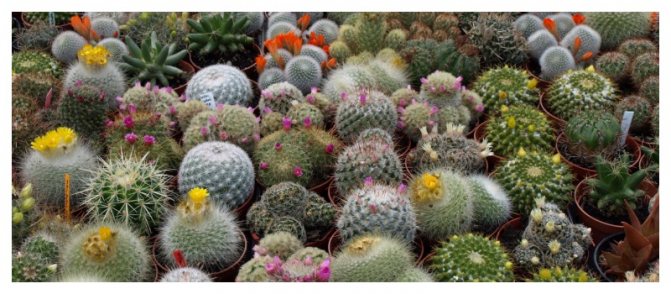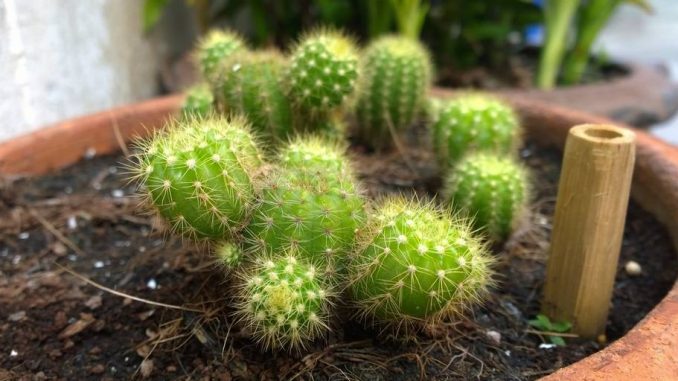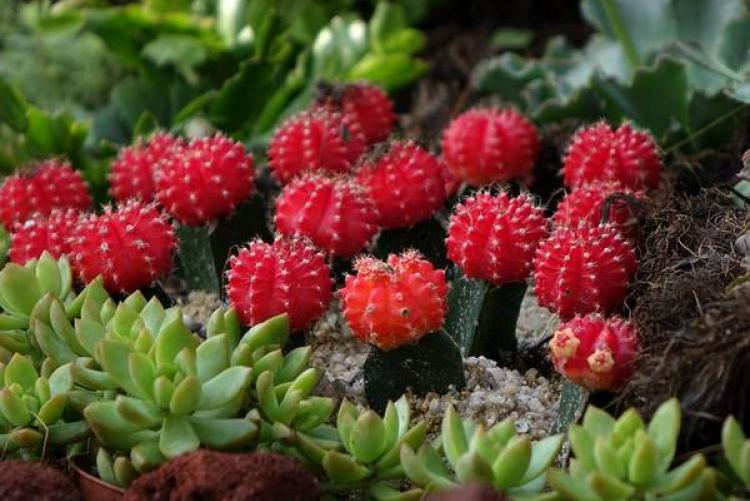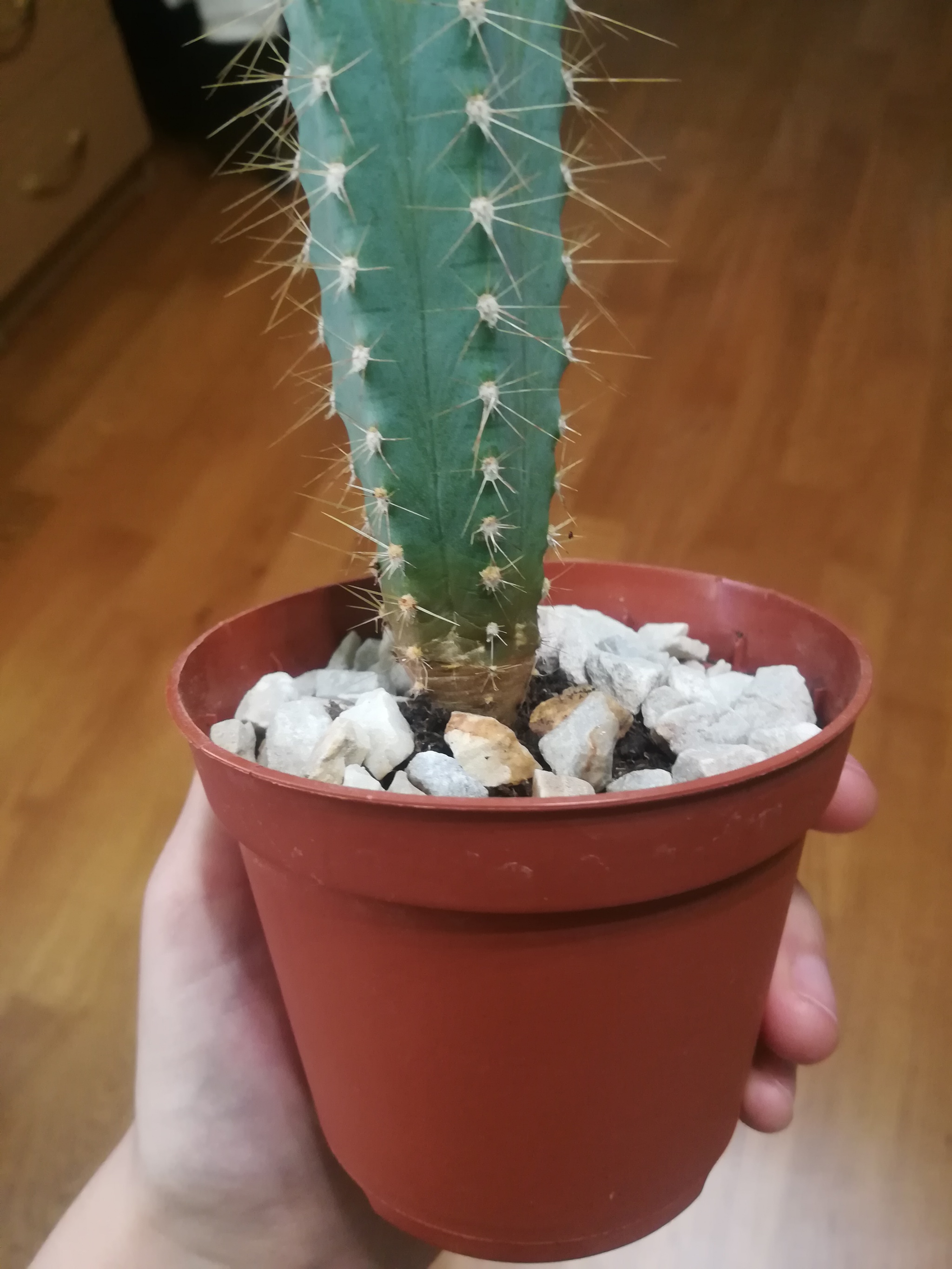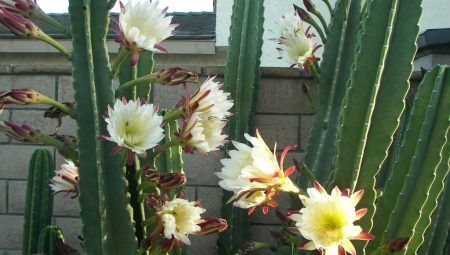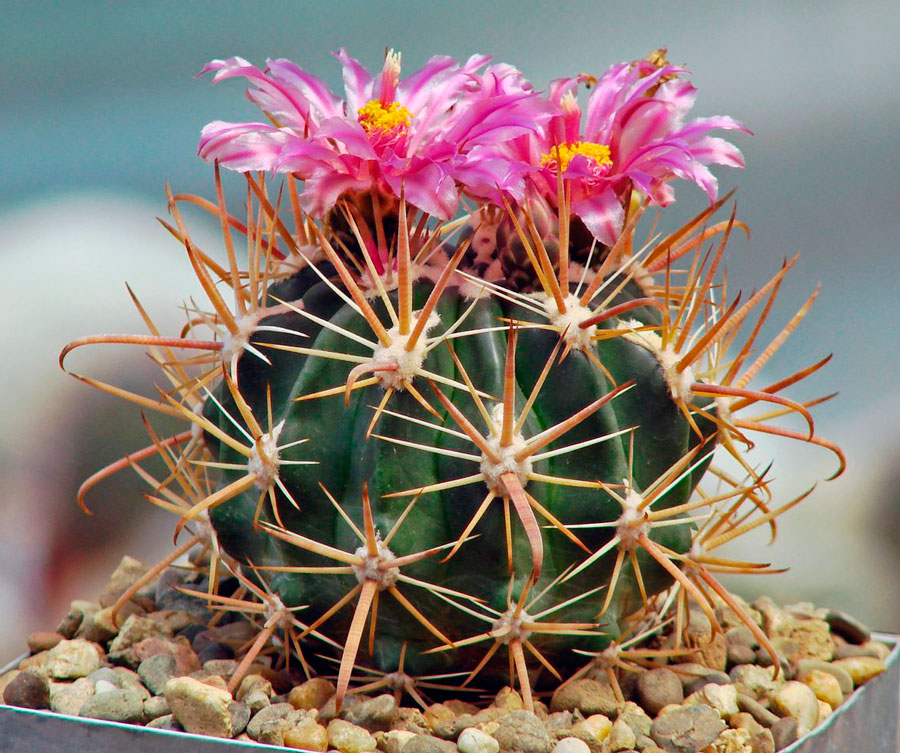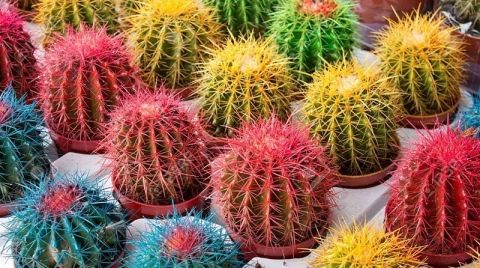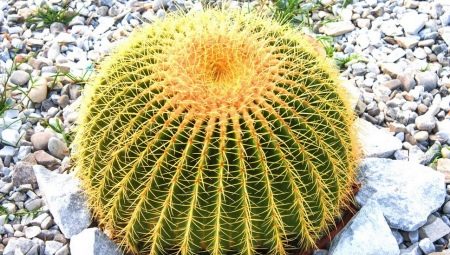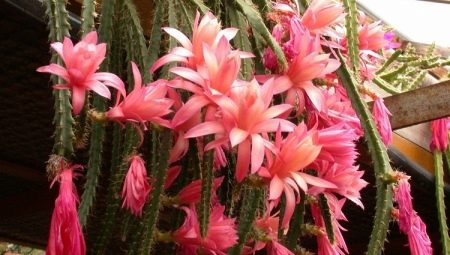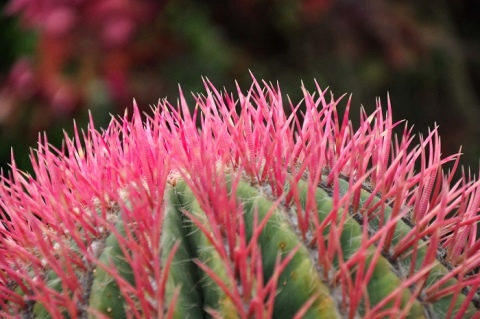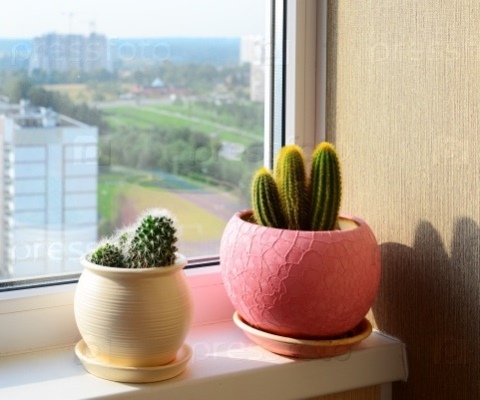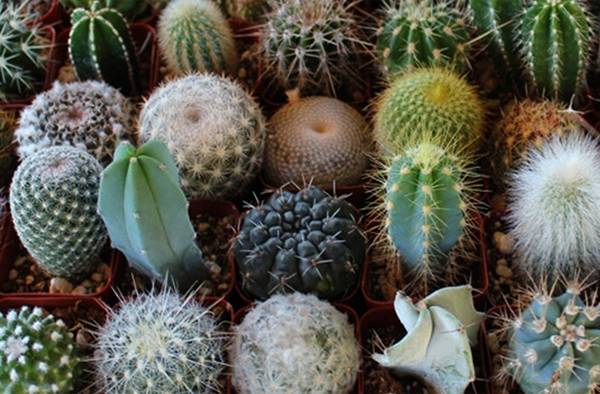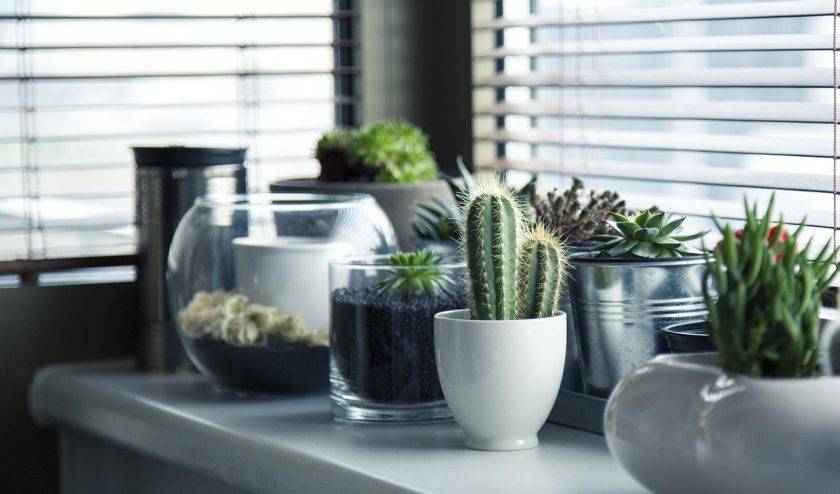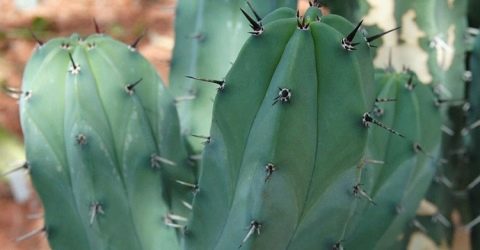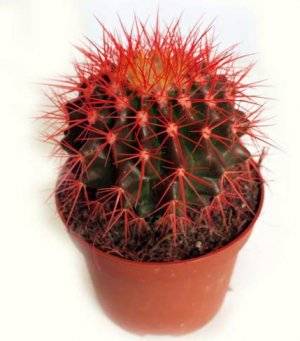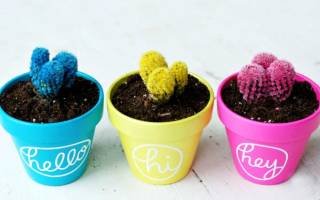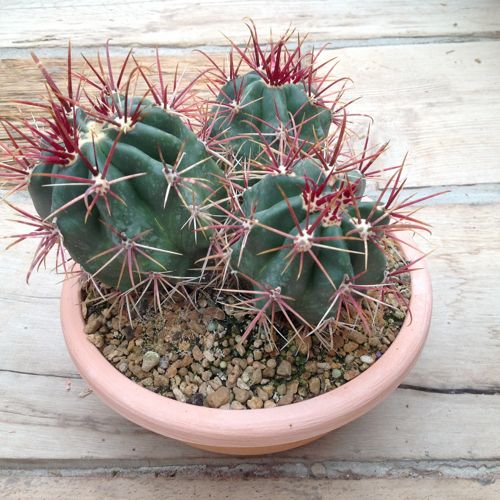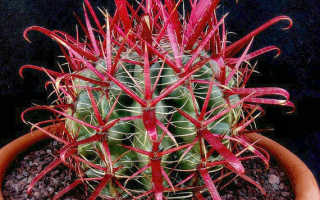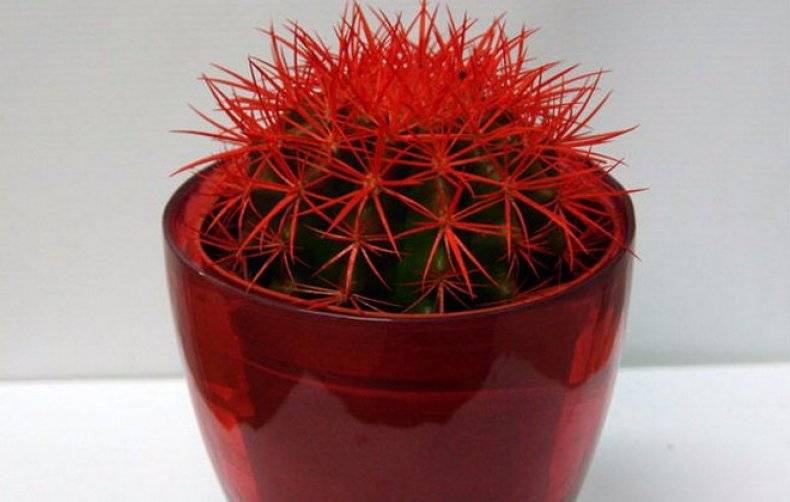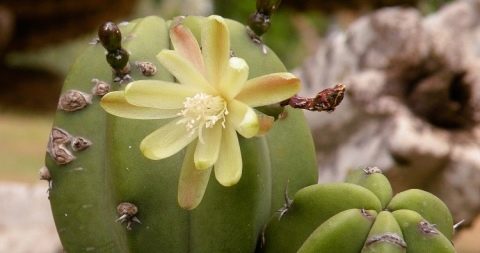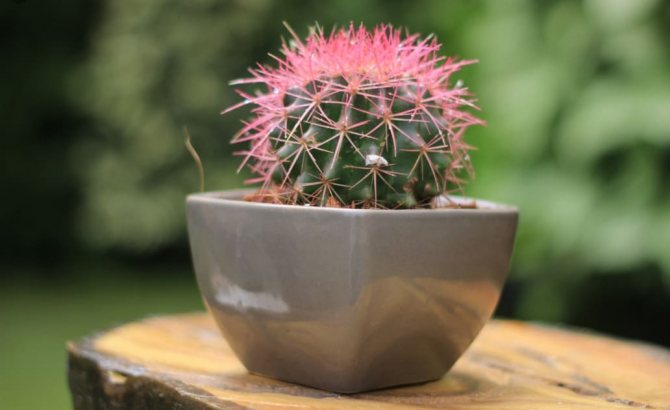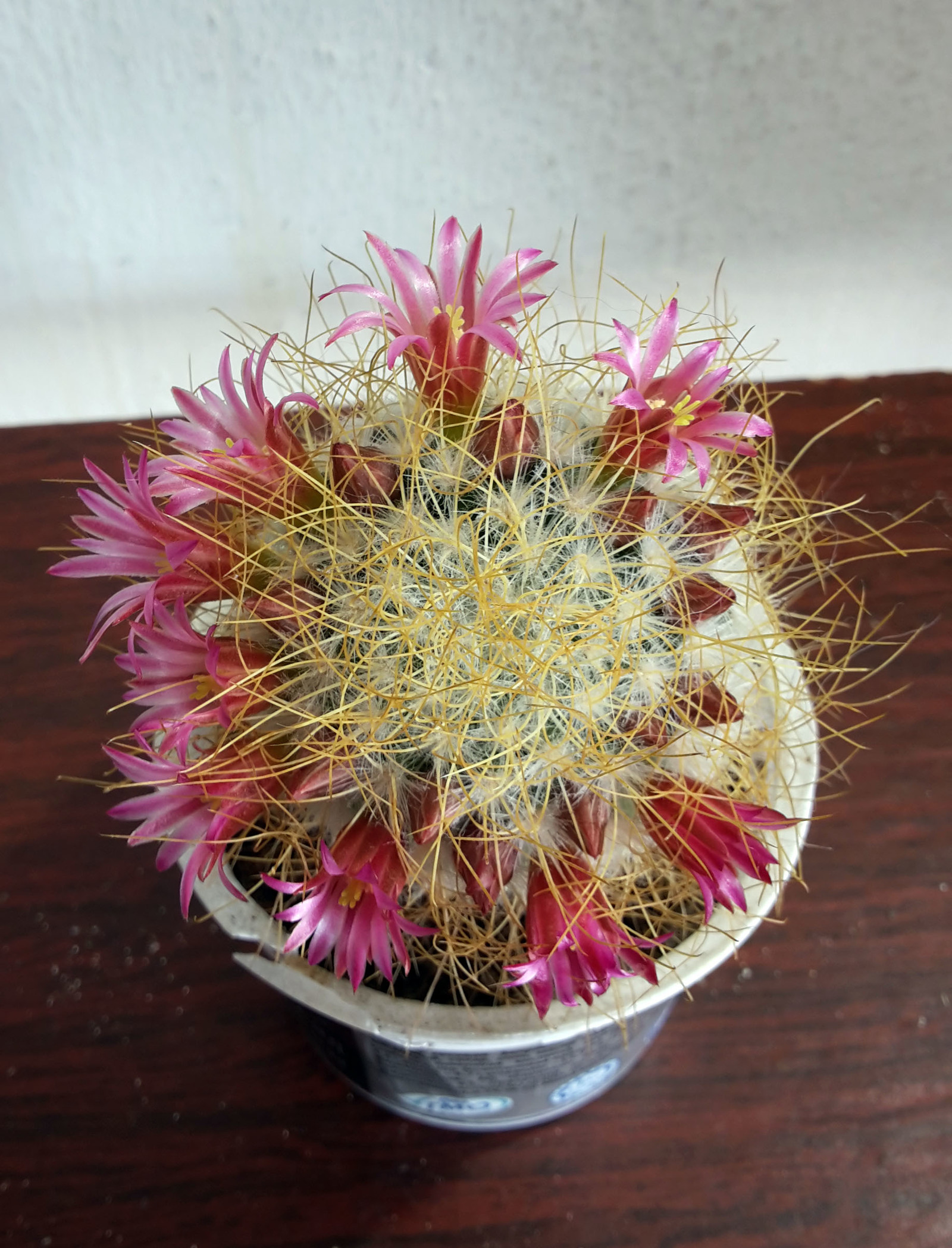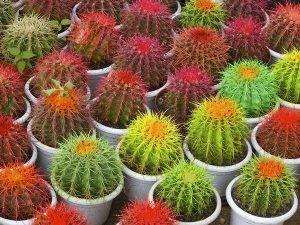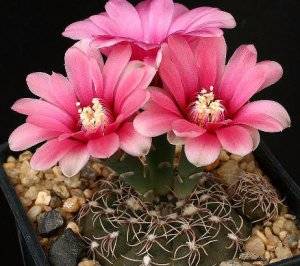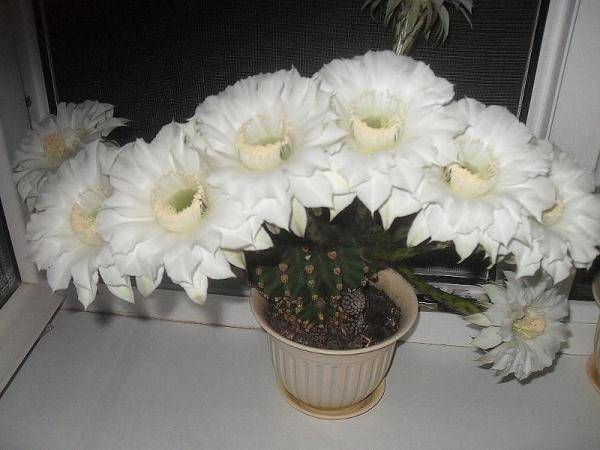Care and maintenance of colored cacti at home
Multi-colored cacti are quite capricious and whimsical to care for because of their color, regardless of how they are bred - natural or artificial. To keep varieties that exist in nature or were bred artificially, the following rules must be observed:
- The cactus should receive a lot of light. Without it, the plant quickly loses its color.
- All colored species do not tolerate direct sunlight. The exception is the white representative of the genus. Due to the fact that his needles twine around the trunk, he can safely stay under the sun.
- Colored varieties are watered in the same way as any others - not too often. At the same time, care must be taken to ensure that the soil is not overdried. If this happens and the soil crumbles, you will have to loosen it yourself.
- Subspecies with yellow needles need frequent feeding. Fertilizing the soil in which such plants grow should be twice as often. In addition, you cannot violate the instructions and dilute the composition more.
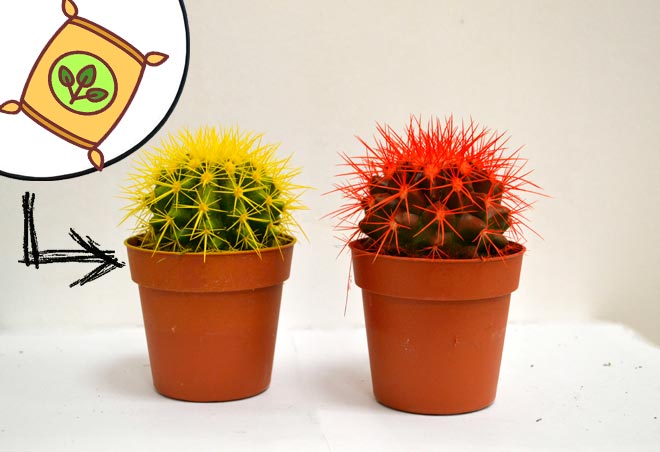
Cacti, which got their color due to food coloring, also have a number of care requirements:
- Water such plants more often, but with less liquid. This is necessary in order to maintain the color of the needles, but not to overmoisten the substrate.
- It is better to paint small plants, which then will not grow too quickly. This is due to the special watering rules. In addition, needles grow more slowly in larger species and gradually become covered with a thick crust that may not be stained.
- Cacti with pink, blue or pastel yellow needles need to be watered in a special way. Once a week, a dye is mixed into the irrigation liquid, and the other 1-2 times it is watered with plain water. This is necessary in order to achieve a soft color.
- When transplanting, a plant with colored needles must be placed in soil, which has been previously irrigated with "colored water" several times. If this is not done, then the color of the thorns may become paler, or a green gap will appear in the color.
Colored cacti are not only an unusual, interesting decorative element, but also a space for creativity and experimentation. Even a child can give the needles the desired shade, and with the supervision of an experienced gardener, a real work of art can be made from a plant. The ability to recolor the thorns is another reason to start breeding cactus plants so that you can experiment with colors, combinations and intensities.
Growing conditions
Before describing the main action - the method of grafting (transplanted children - hymnocalycium Mikhanovich, Stenopleurum and yellow-stemmed Chamecereus) to rootstock cacti, for guaranteed good survival, we list the basic conditions for growing cacti - this will come in handy when the stepchildren and "mothers" grow together need proper nutrition and care.
The soil. For all of the above cacti, a slightly acidic soil mixture (pH = 5.5-6.0) is suitable, options:
- coarse river sand, sheet soil, finely ground charcoal, fine crushed stone and neutralized peat of the AGRO line in a ratio of 3: 3: 1: 1: 1;
- turf, pumice and sand (1: 1: 1);
- ready-made soil PETER PEAT "For cacti and succulents" of the HOBBY line.
If you plan to grow cacti with colored needles, the ratio of the nutrient soil to the addition of natural food coloring added to the soil mixture should be 1: 3.
In addition, the self-induced soil mixture must be sterilized: pour the soil mixture into cheesecloth (4-5 layers) and tie the bag by the handles of the pan, into which you must first pour a third of the water volume. Close the lid, bring to a boil and keep on low heat for half an hour.
Landing capacity. a plastic / ceramic pot with a drainage pot made of expanded clay PETER PEAT of the VITA line with a layer of 15% of the volume and holes on the bottom, as well as a mandatory tray for receiving excess water. It is better to place the pots on 4-5 identical pebbles of Ø0.5-0.8 cm in pallets so that excess water does not destroy the plants during overflow.
Lighting. It all depends on your wishes and capabilities, because due to the presence of phyto-lamps and the correct temperature in the room, cacti practically do not hibernate and grow without problems in winter. As soon as the length of daylight hours becomes less than 12 hours, it's time to connect phytolamps to the process:
- halogen - suspended at a distance of 40 cm from the top of the cactus, while the temperature near the plant should not exceed + 32-35⁰С;
- sodium - more economical and intensive than halogen ones, therefore they are suspended at a distance of 50 cm. Additional illumination time is at least 14 hours / day, until the first ten days of May in the conditions of Central Russia.
But keep in mind that not all cacti will “tolerate” intense lighting. For example, frailey, pediocactus, notocactus feel most comfortable in light partial shade. Read more about the growing conditions for your variety.
Temperature and relative humidity. November-March: + 8-11⁰С, 50%; March-April: + 13-18⁰С, 60%; May-September: + 22-26⁰С, 75-80%; October-November: + 13-18⁰С, 60%. Check the growing conditions for your variety.
Are there colored cacti in nature?
Mother nature never ceases to amaze, giving all living things the most bizarre colors and shapes, and plants are no exception. Succulents are already strikingly different from the more familiar representatives of the flora, but the original coloration obtained in their natural environment provides them with an even more futuristic look. The following bright specimens did without human intervention:
Cereus
These cactus plants, covered with large numbers of white needles, are native to the arid regions of Bolivia, Mexico and Peru. The white color of the needles is retained only if the plant receives a large amount of light.

Myrtillocactus geometric
The succulent plant has white or greenish needles. But the skin covering its columnar trunk has an unusual bluish tint that resembles frost. In order for a home succulent to retain its unusual color, the grower must provide it with sufficient lighting and feed it in a timely manner.

Copiapoa cinerea (ash)
In this spherical cactus, the stem stretches as it grows, acquiring a cylindrical shape. The surface of the stems is covered with a thick whitish-grayish bloom.

Astrophytum
The fat guy from Mexico or the southern United States has a pretty color - its green stems are abundantly covered with white dots. If you look closely, you can see that the pattern is formed from the smallest hairs.

Pereskia
This cactus is strikingly different from most cactus plants, as it has well-developed foliage. The plant has woody stems, and areoles with thorns are located in the leaf axils. There are 18 types of peres, most of them have green leaves, but some are reddish.
There is a peresky prickly variety Godseffiana, the leaf blades of which are golden-orange at the top and pinkish-burgundy at the bottom.
Natural beauties are not as colorful as their dyed or genetically modified relatives, but they also attract attention and admiration.

Care
Watering. Perhaps the only thing that cacti react to sensitively and fairly quickly is water.Try to water them soft, settled, warm (+ 18-22⁰С). At the same time, try not to fall on the plant itself, but to water the soil. The next watering time is the drying of the top layer of the soil by about 0.7-0.9 cm.In summer, in hot weather, water the cacti in the evening, the rest of the time - in the morning
Please note: the higher the air humidity and the lower the temperature of the room where your cacti are kept, the less watering they require. They love cacti and daily moderate finely dispersed spraying with settled water during the period of active growth (+ 35⁰С)
If you do not illuminate your pets with phytolamps in the autumn-winter period, reduce watering for this time to a minimum - once a week.
Top dressing. Offer your pets an ash-water solution (1: 3). Most cacti have a "hibernation" time from October to March, and at this time they do not need feeding.
Cactus care
As mentioned earlier, these plants practically do not need care, since their living conditions are very harsh and cacti have adapted to survive in them. This does not mean that you can not follow the cactus at all, or ignore the conditions of its maintenance - our prickly pet will still have to provide some minimum of amenities.
Potting mix and cactus pots.
The main requirement for the substrate in which cacti will be grown is the large size of the particles of which it consists. Cacti need air nutrition for the roots and free penetration from the surface of even minimal volumes of water, so there should be no obstacles for this.
In addition, the peculiarity of the root system, and indeed of the entire metabolism of cacti, is such that these plants do not at all tolerate a large amount of organic matter (and sometimes just nitrogen compounds) in the soil. Excessive nitrogen intake causes the plant's cell growth to be disrupted, and it can die within a few days. Nitrogen, of course, is necessary for cacti, but its amount should be strictly disaggregated.
The approximate composition of the mixture for growing a cactus is as follows:
You can use a simpler composition:
Sometimes you can add a little fertilizer to the substrate. For this purpose, superphosphate or potassium nitrate (a teaspoon per pot with a volume of 2-2.5 liters) is well suited. When using superphosphate, a teaspoon of calcium carbonate is also added.
The volume of the pot in which it is planned to grow the cactus must exactly correspond to the volume of the straightened root system of the cactus. If there is too much free space in the pot, the cactus will not grow until it forms a root system sufficient for the pot. With a small amount of free space, the root system of the cactus will begin to die off, which will also negatively affect the growth of the prickly pet.
It should be understood that not the entire volume of the pot will be used for soil. About a quarter of the bottom of the pot will be occupied by drainage (usually made of expanded clay or large rubble). And in the upper part of the pot there will be a so-called powder - a layer of fine gravel or pebbles, completely covering the soil from above.
Sometimes ordinary sand is used as a powder. The total amount of drainage and powder in a pot can take up to half of its volume.
Watering and spraying issues
Depending on the natural living conditions of the cactus, the conditions for its watering also differ. Basically, this refers to the amount of water applied under the cactus and the frequency of watering. These parameters depend not so much on the cactus variety, but on the climatic conditions in the area of its growth.
It is due to the fact that many cacti grow in similar natural conditions that it is allowed to grow several different types of cacti in one pot at once. In addition, there are general rules that apply to all plants, regardless of their conditions of maintenance or "native" climate.
All cacti need watering with settled water (without chlorine and impurities) at room temperature. Of course, melt water is best suited for watering these plants, but few people will collect it.
Cacti are watered either in the usual way, from above, or using a pallet. It is believed that watering with a cactus pan is more desirable because it does not destroy the soil structure and does not damage the root system. However, most cactus growers prefer top-watering.
At the same time, a mistake is often made, as a result of which water gets on the stem of the cactus. This is not entirely correct, since water should only fall on the cactus in the form of a finely dispersed suspension in the air. Therefore, watering must be done by directing the stream of water not in the center of the pot, but at the edges.
Cacti love spraying, because under natural conditions they are covered with small droplets of moisture every morning, which falls on them in the form of dew. This uses a spray bottle capable of creating the smallest droplets of water. Dew temperatures are usually lower than the air temperature, however, at home, it is better to spray cacti with warm water, about 30-35 ° C.
Home flowering cacti
 About half of all varieties of flowering cacti can be expected to bloom when they reach 3-4 years old. In the future, they are able to annually delight others with their flowers. Most cacti bloom in spring. But you can successfully pick up several types, the flowers of which will decorate the interior throughout the year.
About half of all varieties of flowering cacti can be expected to bloom when they reach 3-4 years old. In the future, they are able to annually delight others with their flowers. Most cacti bloom in spring. But you can successfully pick up several types, the flowers of which will decorate the interior throughout the year.
 Unusual flowers that bloom in some types of cacti are shown in the photo with the names.
Unusual flowers that bloom in some types of cacti are shown in the photo with the names.

- It is necessary to take very careful care of the plants, because even one damaged thorn can significantly reduce the possibility of flowering.
- In the autumn period, it is necessary to reduce the amount of watering, and closer to winter, stop them altogether. You can start watering only in March, first spraying the cacti with water.
- In winter, keep your plants in a cool room with dim lighting.
- When buds are born, you cannot transplant and fertilize cacti, otherwise there is a chance of being left without flowering.

